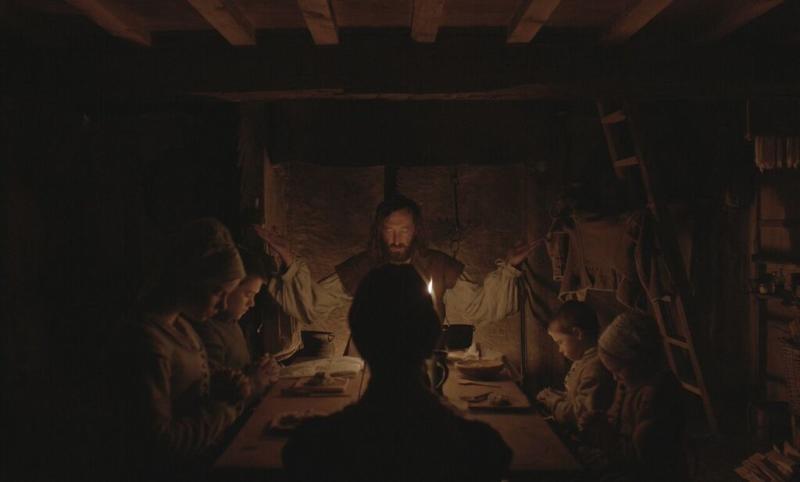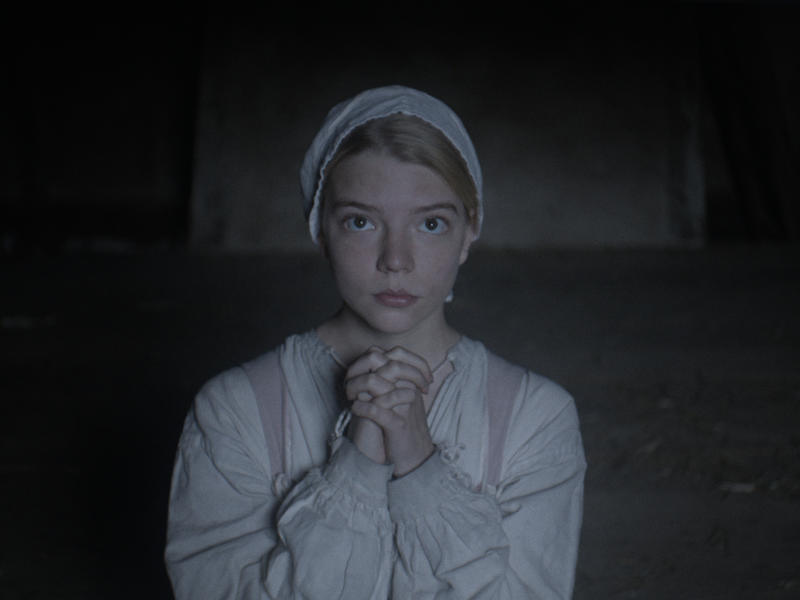
A slender young man with a bleached comb-over, black kilt, and platform commando boots was standing over us. He was politely explaining to my guest over the hum of the party’s background music that our seats on stage left weren’t conducive to his performance, one that could be impeded by our proximity to an instrument referred to as a Theremin. It does, indeed, emit electric signals controlled by the human body to produce its sonic screams. Instead we situated ourselves on a nearby black leather sofa, sandwiched by two couples in head-to-toe black garb, and the set began. He played for the better part of 20 minutes, at one point stopping only to remove his crisp button up—much to the approving shrieks of his audience. However, bizarre and mesmerizing as it was, it was merely a precursor to the main event. We’d been invited here by Satanists to partake in a sabbat cycle ritual, a Wiccan holiday of sorts.
Upon entry to the Jane Hotel’s ballroom, a serene, bare-chested woman had greeted us with a bowl of scarlet substance into which she dipped her index and middle fingers and traced the shape of an X on our foreheads. It was symbolic of an awakening—perhaps ironically so on Ash Wednesday—but there was nothing holy about this gesture. I’d later learn the substance was something known as Dove’s Blood, a blood-substitute product traditionally used by witches and occultists in ritualistic practice. Xes drawn on, we were then instructed to sign a black leather-bound book that lay open-faced on a pedestal. It bore a pointed similarity to the one we’d seen in a movie just hours ago, but that was no mistake.
This was, after all, the official after-party for a New York pre-screening of The Witch, a critical horror darling penned, researched, and directed by Robert Eggers. The film follows a Puritan-era family who have been ostracized by their settlement and exiled to live away from the safety of civilization. When tragedy befalls the god-fearing unit, strange occurrences begin to unfold on their farm and threaten the foundation of their faith.

Just as soon as the kilted musician finished his set, attention had shifted upward. A handful of stoic, nude men had appeared in ascension on either side of the ballroom’s Imperial staircase. At their center stood a dark-haired woman, Jex Blackmore, National Spokesperson for the Satanic Temple. Trance-like, the audience awaited her delivery of the event’s satanic practice. As she spoke, a cradled pig’s head swathed in a blanket appeared in the hands of one of the men, who passed it to a woman to Blackmore’s right with the care generally reserved for an infant. On the opposite side of the stairway, a knife was ascending the ranks. Fittingly, these two objects represented empowerment, an apt nod to one of The Witch’s overarching themes.
"The knife is symbolic very much of breaking down injustice and cutting through the fog of the world in order to have clarity," Blackmore later told me by phone. As for the swine head? "It’s been, in Western culture, demonized as a grotesque figure of overindulgence. But in the pagan times it was a figure very much used as an icon of fertility, fecundity, and abundance. We wanted to use that as a way to show that we don’t have to control our animal nature. We don’t have to control or demonize what we know about our fellow animals. It’s something that we can embrace and learn about ourselves from looking at it."
As Blackwell delivered her oration, it became immediately clear why the Satanic Temple, a religion by definition but a political organization in practice, had teamed with The Witch’s production company to promote the film. The rollout for the partnership between the Satanic Temple and A24 began about a month out from the film’s official release, much to the thrill of the film’s enthusiasts and to the horror of just about everyone else. The endorsement was prompted, in part, after the Satanic Temple received a screener of the film and felt there was a metaphorical and historical crossover with another project they’d been cultivating. The theme of mass hysteria and satanic panic on which the film was heavily based is one that the Satanic Temple knows well. "One of the things that interested us about the film is that it’s an American story rooted in American folklore about the supernatural," Blackmore said. "It’s also very much part of our own history."

Witches, satanists, and occultists have struggled with their outsider status for as long as theism has existed as a counterpoint (forever, basically). The Salem witch trials is one of the most infamous examples of unbridled religious hysteria, and how it can morph into its own terrifying demon. Spectral evidence and unsubstantiated testimonies resulted in the murder of dozens of individuals, most of them women, on the grounds of practicing witchcraft and offending the delicate sensibilities of God.
"Part of what is so horrifying about the film is that the witch takes on these really grotesque characterizations that’s played out in the fantasy," says Blackmore. "I think the film shows a glimpse into a psychology surrounding the fear of the unknown, which is very much part of our own history and people who are coming here. They were kind of demonizing anything that they saw as a threat and using religion as a means to justify that." One of the The Witch’s most chilling moments arrives when Thomasin (Anya Taylor-Joy) is accused by the family’s patriarch of herself being a witch. The imminent threats of imprisonment or worse read immediately clear on her frightened face.
Fetishization of this era has diluted the very real threat imposed when religion conflates itself with state affairs. And that misinformed nostalgia, says Blackmore, is a foolish rewriting of history. The Witch is therefore an effective examination of the extremes to which mass hysteria can endanger civil liberties. "I think the film itself provides a glimpse into that and then also access to reconsider what religious liberty means and why it is important in the context of our own history and our own folklore of America," she adds.

Religious liberty is important to the Satanic Temple. It is a nontheistic religion, meaning it maintains its position as a religion without recognizing any supernatural deity. "We have all the defining features of a religion. We have a community, we have a shared history, we have ritual practice, aesthetics, and guiding principles," explains Blackmore. "However, we don’t believe in the supernatural. We don’t have God elements. We really believe that religion can—and perhaps even should—exist without that supernaturalism as a way to be a better support, to be more productive in society."
And as for how Satan plays a role in all of this? "We don’t worship a personal Satan. Satan is a metaphorical figure, which provides a context for our own works and goals. We base our understanding of Satan off of the literary texts from the Enlightenment period. She really is the emancipator of our time and a figure that fights against tyranny and injustice." That manifests for these Satanists in their ongoing legal battles to protect women’s reproductive rights, individual liberty, and religious freedom—freedom to believe, essentially, in no god at all.
I ask her what she thought of Satan incarnate in the film, portrayed by a black horned goat named Phillip that bore an uncanny resemblance to Baphomet, a favored figure among many occultists and particularly the Satanic Temple. "The Satanic figure or even figures of mischief in old religions have been these unruly animals. I think the goat has been the figure of Satan as a result. I think the film plays it out as an animal or natural force that you are unable to control, they are unable to reign in. That kind of chaotic figure is so similar to the characterizations of the devil, of Satan. So I think Black Phillip was perfect." She laughs. "In fact, I heard later that Black Phillip was incredibly difficult to work with on set."
While the film paints a vivid picture of the time period’s schizophrenia about the devil’s doing, it also challenges viewers to examine their own understanding of what constitutes a threat (in this case a witch) and whether those presuppositions are grounded in reality. "It’s my hope that viewers of the film aren’t distracted by the supernatural fairy tale," says Blackmore. "I think we have to say, at a very practical level, clearly witches aren’t murdering babies in the woods and aren’t capable of demonic possession. But what is behind that? What is the psychology that emerges from within?" Indeed, mass hysteria and its propensity for destruction is perhaps the film's most chilling truth.
And maybe that's why we'd been corralled in a ballroom to participate in a satanic ritual. We had to stare down what we didn't understand to experience our own "awakening." Blackmore explains that the intent of any Satanic Temple event is to create an experience that challenges people to reconsider their own level of comfort within a certain environment, and to encourage them to renegotiate their own preconceptions about things they don’t understand. And what's so evil about that?

